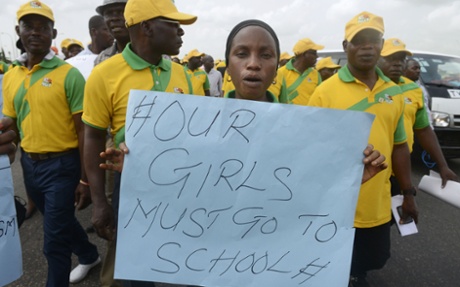Education
Source: The Guardian
Better education translates into reduced female fertility rates, improved infant mortality rates, and fewer early child marriages. We have to keep educational gender parity in sight.
Like many girls in rural Yemen, Raysa Al-Kholani was married off early, when she was 13. Years later, her in-laws insisted she stay home and care for her children, but she wanted to return to school. So, with her husband's support, she set out to get the education she so badly wanted – and deserved.
It wasn't easy. She had to take her children with her to school, walking almost eight kilometers. Some girls in her community rejected her friendship because she was studying with boys. She pushed on, eventually becoming a volunteer teacher after completing her studies, giving other girls the inspiration and support to stay in school themselves.
The number of girls in the school where she is now teaching rose from 10 to 95 during the two years she has been working there. Raysa has become more than a teacher – she is now a role model for girls and an advocate for girls' education.
Raysa's story is all too familiar across many countries. A few higher-profile cases – most notably in Pakistan, where Malala Yousafzai defied extremists by daring to go to school, and in Nigeria, where Boko Haram brazenly kidnapped hundreds of Nigerian girls, ostensibly to keep them out of school – are vivid evidence that educating girls continues to be dangerous in many places.

A woman with her children sit in their single room house in Sana'a, Yemen. Photograph: Mohammed Hamoud/EPA
But the education of girls has to be at the center of any nation's effort to transition from poverty to prosperity. Indeed, as numerous studies have shown, educating girls and women translates into, among many other outcomes, reduced female fertility rates, improved nutrition for pregnant and nursing mothers and infants, improved infant mortality rates, and fewer early child marriages. Better educated women are more likely to engage in civic participation, as they gain confidence and demand their rightful role in the political process.

A Nigerian teacher holds a sign reading "Our girls must go to school". Photograph: Pius Utomi Ekpei/AFP/Getty
The good news is that the international community's commitment to educating girls has made great progress. Many countries are well on their way to meeting the millennium development goal targets of gender parity in universal primary education.
Still, challenges persist:
• Women represent nearly two-thirds of the world's 775m illiterate.
• 126m children in primary and lower secondary schools, 65m of which are girls, are still not getting a basic education around the world.
• Too many girls in developing countries are still shut out of school because they have to work, are married early, or have to care for younger siblings.
• In many developing countries, girls' completion rates and learning levels remain lower than those of boys.
Poverty and location further aggravate the already steep obstacles many girls face just because they're girls. Girls from poor families in rural areas are far less likely to go to school than girls from wealthier families in urban areas. As the most recent UNESCO education for all global monitoring report noted, "if recent trends continue, the richest boys will achieve universal primary completion in 2021, but the poorest girls will not catch up until 2086."
While we've seen growing numbers of girls getting and completing primary education, far fewer move on to, let alone complete, secondary schools – in part because of the kind of cultural barriers that Raysa encountered. With secondary schooling, girls' future wages are higher, they have fewer children, and they are less likely to be victimised by human trafficking and more likely to learn how to protect themselves against preventable diseases.
Getting more girls a good education requires an approach that harnesses the collective efforts of developing nations, donor nations, multilateral organizations, NGOs, private-sector institutions.
Raysa herself is a beneficiary of such an intervention in Yemen. It is grounded in the comprehensive national basic education development strategy that the government of Yemen developed a decade ago with the help of the Global Partnership for Education, whose board I chair. That plan and several grants from the Global Partnership totaling $122.4m, plus the support of many other partners who endorsed the plan all contributed to improved education infrastructure in Yemen and increased access to primary schools for all children, especially girls.
The lesson is that increasing the number of girls in school worldwide will take more than the sort of tenacity that drove Raysa to get her education. Our efforts are critical too. Educating the world's poorest girls can only be done with the firm commitment of many stakeholders – both domestic and international – to plan, fund and build strong, sustainable and equitable education systems.
To that end, a global summit to replenish funding for programs that made Raysa's story possible will convene in Brussels on 26 June under the auspices of the Global Partnership for Education. We cannot afford to fail girls like Raysa, and all the hope for the future they represent
